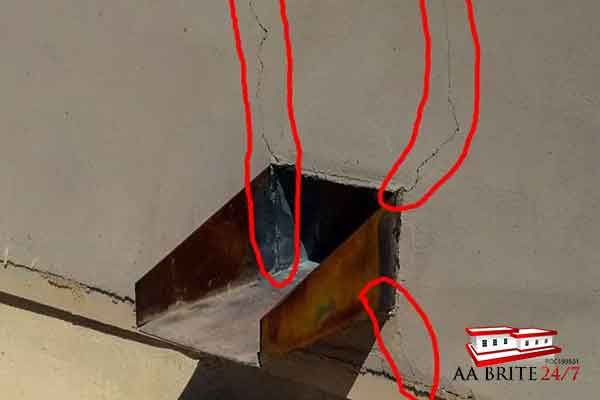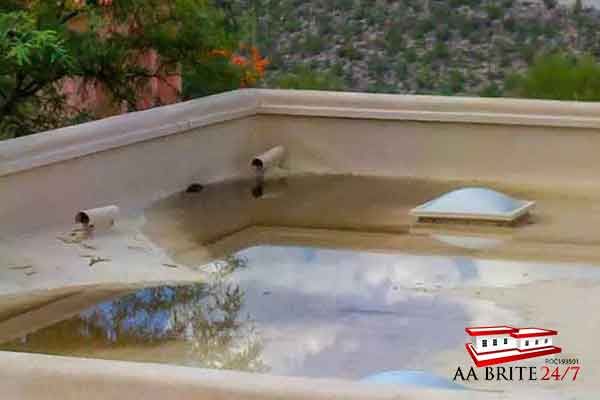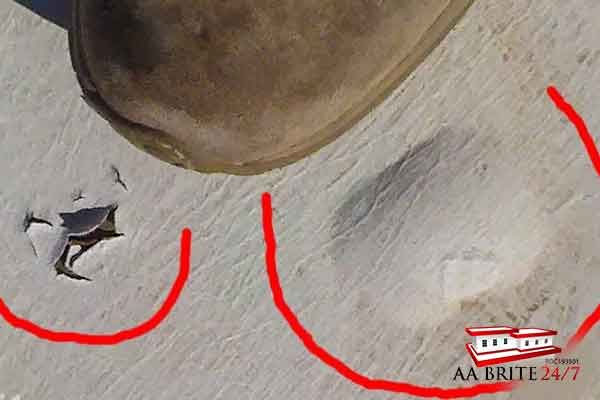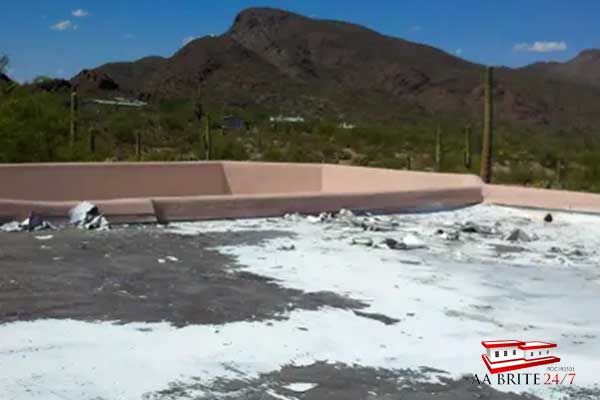Scupper Repair & Replacement

A Scupper is a drain off of a roof through a wall which rainwater water flows through as it exits a roof.
Scupper problems are a primary reason why as a contractor I can afford a nice house. In other words they are fairly common, and in some cases can be fairly expensive to repair.
There are multiple reasons why scuppers seem to be a magnet for roofing problems. Fast low quality construction, an architect’s failure to understand installation liability, and the sheer number of materials concentrated in one area which all expand and contract in the heat at different rates. Differential expansion. Basically a perfect storm of problems in some situations.
You’re going to need a coffee or a beer before reading on, as there is quite a bit here.
Low quality construction. The lowest bid contractors are used to construct most track homes. One hundred dollars saved per home on one thousand homes turns into big money. So the roofing installation crews are banging out work as fast as they can. If a few less nails or screws are used than was necessary, then the entire drain (metal scupper assembly) is moving around some. It might only be 1/16 of an inch, but it matters, and it can become a headache for years to come.
In the over twenty years we’ve been patching scuppers in Tucson and Southern Arizona, the same design mistakes have popped up over and over. I joke with my employees that one day a crazy man (me) is going to kick down the door at the UofA Architecture school and be dragged off by campus police as he is screaming about lowering the scuppers. It will make the news and he will sound crazy, but he isn’t.
When drawing plans its easy to write on them that the scuppers are to be a half an inch lower than the level of the roof. That doesn’t mean when the framers and roof crews are flying through the new builds that a little detail on the plans will be followed. In my opinion the scupper and drain area should be INCHES lower than the rest of the roof. This would cost more as the framing contractor would actually have to build the area around each scupper differently than the remainder of the wall, and the roof crew would then install the scupper in the lower area. There is a long term cost benefit, but not a short term one.
The third reason is CYA, or cover your rear, from the installation roofing contractors point of view. When the scuppers are installed on a new build, the roofing contractor knows the scuppers are prone to leaking and will usually have the roofing crews put a little extra material (tar or sealer) around the scuppers as they are installed. This extra material is a cheap guarantee against scupper movement cracks, but it also raises the bottom of the drain upwards. Think about drawing a circle inside of a circle. Each new circle you draw is smaller than the previous one, but the bottom of each circle is also higher than the one before it. Adding more material to the scupper in effect raises the ground level of the bottom of the scupper, and creates a dam in front of it. If a little material was used to seal the scupper, no water would get stuck sitting in front of it. When a lot of material is used, it creates a dam. Years down the road, the dam is still there holding water, and now the scupper and the material under it is old and has moved a lot from heat cycling. It’s a recipe for leaks.


Scupper in Good Shape
This is pretty rare.


Smooth Stucco Cracks Around Scuppers
Smooth stucco is prone to cracking. Corners on windows, doors and scuppers are prone to cracking. Combine the two of them and it’s almost a guarantee there will be cracking in the corners of smooth stucco scuppers. The problem with these is if its an area where people can see it, the repair will scar and be ugly. The only way to lower the visibality of the patches and caulk is to paint the wall. The Stucco Patching section of this web site has quite a bit of information on this topic.


Leaking Around Scupper
A building maintenance man did some roof coating and in general did a pretty good job. He apparently didn’t know to seal up the outside of the scupper too. When I get a call about a leak only occasionally happening during a rain this usually means the hole is up a few centimeters off of the flat portion of the roof.
Holes Inside Scupper
Fairly common problem. All of the different materials; plywood, tin, tar paper, tar, cool coating and fiber tape are each expanding and contracting at different speeds with the daily heat cycle. Eventually gasses in the tar work their way out and now there’s a leak.


Gutter Boxes
Another one with an above average difficulty level. The caulk has probably failed under neath the scupper and the water is running into the wall. If this is the case the only way to get to them is to take off the gutter box. The adobe frequently falls apart when this happens and makes for more work. Another way of saying this is we have to charge more to repair these since they take longer than most other repairs.
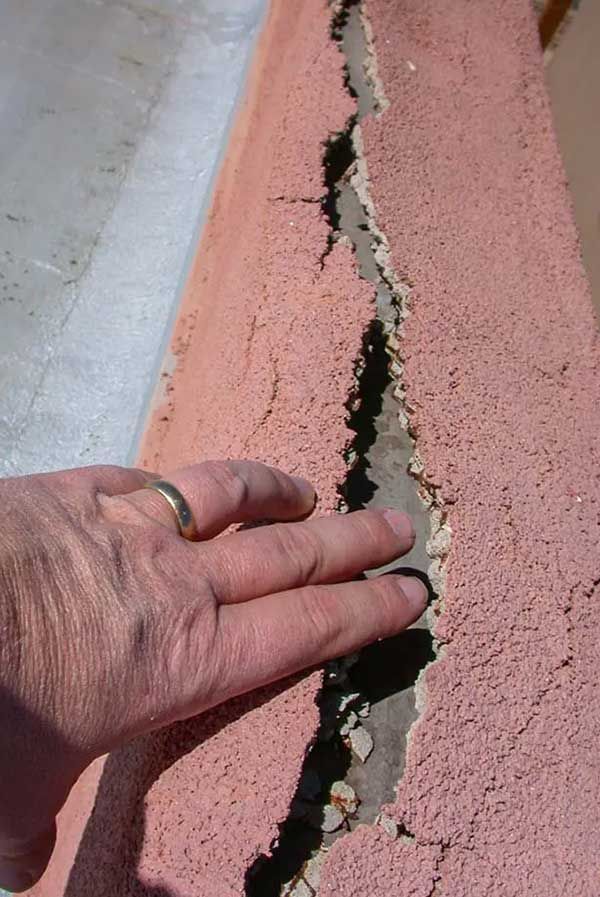

Wall Leak
This is not a roof leak or a scupper leak, the crack is near the srupper and water is coming in through the wall.
Leak at Base of Scupper
Common problem. In this case gas bubbles came out of tar and now water can get it.


Cannon Scuppers
10 out of 10 on the difficulty scale. “Cannon Scupper” is our term for them. It means a long scupper and you can’t get your hand into it. In this case the leak is at the end which is good. The area marked in red needs to be caulked. The water is running back up the clay pipe after exiting the metal insert.
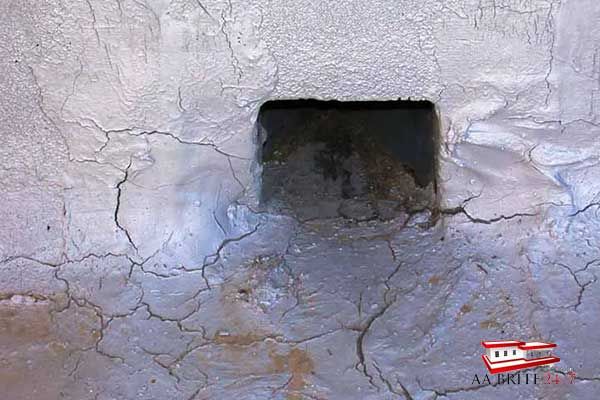

Cracks around Scupper
Common problem. Caused by heat cycles and age.
Small Elevated Hole at Scupper
This will leak with big rains but not small ones since the water level only gets up to the leak during big rains.
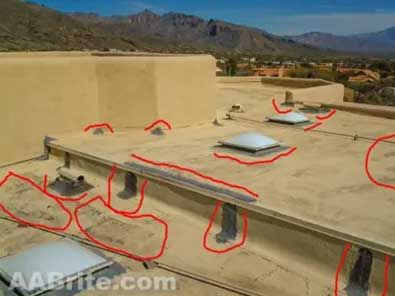

Mesh Lifting
The patching mesh was not sufficiently coated with roof coating and water can get in under it.
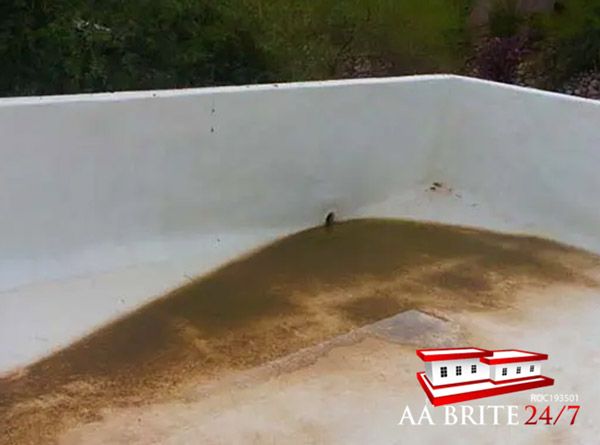

Debris At Scupper
The debris hasn’t turned into a problem yet. Sometimes debris clogging the scupper causes huge problems. More frequently it causes accelerated aging at the scupper since the leaves and dirt hold water. The roof coating needs to dry out between rains or it gets soft and quits working – like skin that’s been in the bath tub too long.
Stuff Inside Scupper
Grr. Most all building trades have something other trades do that’s wrong and irritating. Here’s an example. Scuppers were not meant to be doors ways for cables and pipes. Now that its done, the correct way to do roof work around this pipe is to cut it off, do the roof work, and then have the AC guys reinstall it after the roof work is complete and cured out. Most homeowners just want us to work around it. We can, but since the pipe is sitting in our material it knocks the longevity of the new coating down some.
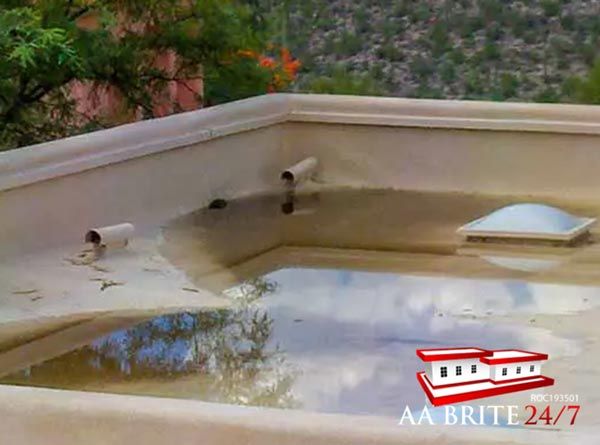

Pond At Scupper
This pond is actually “great” by Tucson standards. If they are small – say a square foot or so, they can dry out between rains. If they get bigger then they hold the water too long and make problems.
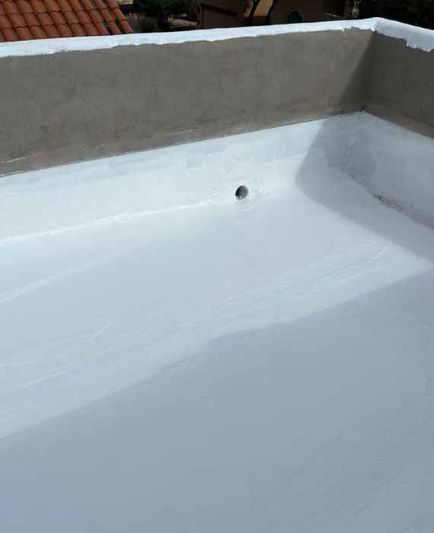

Scupper WAY To Small.
Not much can be done with these. Depending on the build of the house, the wall / roof can be cut open and a larger scupper installed. This is outside our scope of work.
More Roof Problems You May Have




